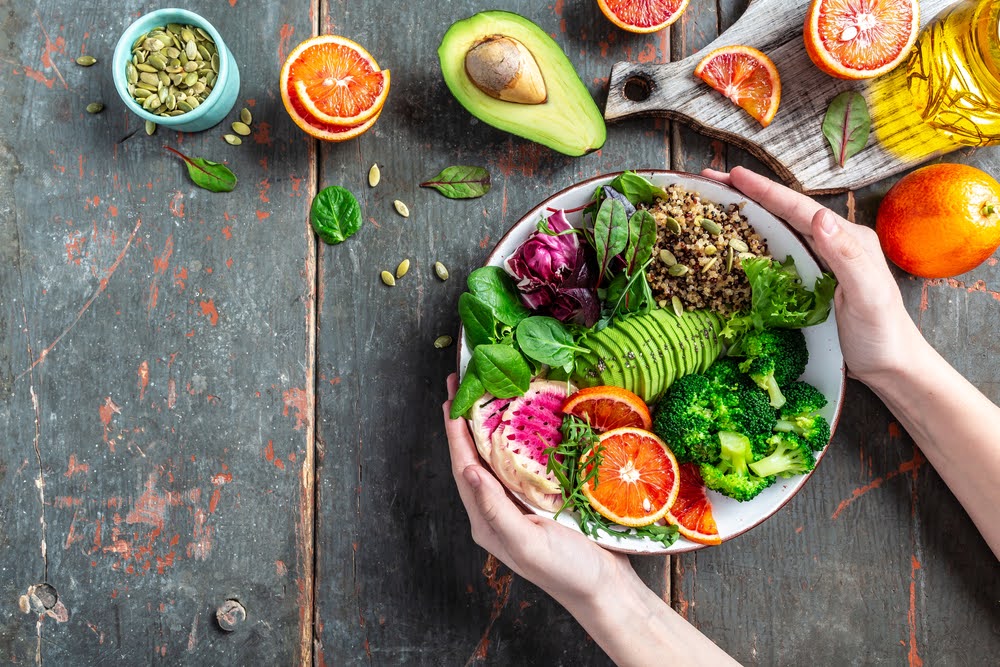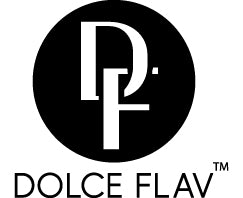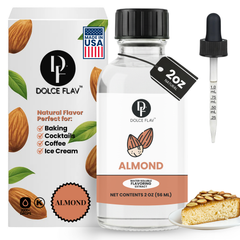
Veganism has been exploding in popularity. Whether it’s for health benefits, financial reasons with soaring meat prices, or even a moral perspective, vegan food has never been more popular than it is today.
However, with a vegan menu needing to comply with a multitude of restrictions to ensure authenticity and prevent offending guests or not meeting their dietary needs and preferences, it can seem a little more difficult to truly elevate a vegan menu and include things that are expected in a high-quality dining environment. Whether that’s a restaurant or your own kitchen.
Luckily, there is a way to spice up vegan-friendly cuisine without relying on strange compounds, overly complex combinations for otherwise simple food items, and other things.
You can use food flavoring for vegans.
Today, we’re going to go over 5 vegan-friendly ways you can spice up a vegan menu and take it to the next level, and then we’ll go over some considerations you should make using them.
Let’s get started.
1: Recreating Dairy Desserts with Authentic Flavors
One of the things a lot of vegans miss when they stop eating meat and using animal products is a good dairy-based dessert. Dairy-based desserts make up some of the most iconic desserts on the planet, and not being able to eat them due to dietary restrictions can be a little rough.
Of course, there are vegan substitutes available such as ice cream that doesn’t use milk and cake that doesn’t contain eggs or dairy, but a common problem with those is that they don’t authentically recreate the experience of eating the original versions of such dishes.
Food flavorings can solve that problem.
For example, cheesecake isn’t something you can get on a true vegan menu. It’s loaded with cream cheese, and the crust is packed with butter.
While you can use a variety of means to get the texture right, recreating the taste from plants simply isn’t possible. There is no cheesecake-flavored leaf or bean.
However, you can use a cheesecake food flavoring.
By incorporating a food flavoring into your vegan “cheesecake”, you can perfectly recreate the experience without the use of dairy products.
You can also do this with vegan ice creams that need dairy-based ingredients to recreate a classic flavor. Such as a chocolate ice cream. Chocolate has milk in it unless you get 100% dark chocolate, and that tastes fairly horrible to most people. A chocolate food flavoring made without animal products can let you put the chocolate ice cream everyone loves on your menu without breaking any dietary rules.

2: Beverage Enhancement
This is another basic one, but you might not have thought about it. Drinks don’t typically use animal products such as meat or eggs, but they do commonly use dairy. Cream and milk are often used in a wide variety of beverages, from alcoholic options to non-alcoholic options.
While you don’t really need a “milk” food flavoring, the lack of dairy products on your menu does mean you can’t create some awesome staples such as strawberry crème drinks, milk chocolate drinks, and more.
Food flavoring allows you to do that without breaking any dietary restrictions.
For example, if you want to offer a chocolate vegan milkshake, all you have to do is find the right vegan ingredients to emulate the texture and physical experience that the milkshake provides and then add a chocolate food flavoring to get the right flavor.
3: Vegan-Friendly Sauces
It doesn’t seem like it when you first start looking at foods through a vegan lens, but many sauces aren’t vegan-friendly. They typically contain fats or various other animal products that are strictly against a vegan diet.
With sauces being such a pivotal part of high-quality dining, that can create a problem. If you can’t use animal products to make a sauce, you have to get creative with your ingredients just to get the texture right, and oftentimes, you can’t add any natural fruits or vegetables to that formula, or you mess your sauce up.
There’s not much you can do to replace the flavors added by using things such as beef fat or butter, but you can take care of the other part of the situation where you can’t add fruits and vegetables without messing up the consistency.
Let’s use a thick mango habanero barbeque sauce, for example. While you can use liquid smoke and other ingredients to nail the barbeque flavor, and you can easily use habanero extract to get the heat you need, you can’t just emulsify peaches and toss them in the sauce.
You can use food flavoring, though.
This is a method used even without the restrictions of a menu being vegan. Adding fresh fruits to a sauce can make preserving it difficult, but you can easily use an extract without affecting its shelf life.

4: Adding Flavor to Meat Alternatives
One common concept in vegan cuisine is the use of meat alternatives. Natural, as-is, vegan food is delicious, but when you are craving a burger, or you have friends who aren’t vegan, and you want to kind of blend in with them, a meat alternative is a good way to get by.
However, meat alternatives usually don’t nail the meat flavor very well on their own. Take a black bean burger, for example. It looks like a burger, feels like a burger, and if you use vegan bread and toppings, it’s a vegan-friendly food item. It just lacks the beefiness and smokiness that you get from a real beef patty.
Now, you’re going to have an issue finding a beef food flavoring that is also vegan-friendly. However, you can use liquid smoke to get the smokiness that accompanies a good grilled burger, and you can even find vegan-friendly bacon flavors that can help you make vegan-friendly bacon cheeseburgers. Especially if you make a meat alternative bacon and flavor it with the food flavoring instead of just mixing it into the patty.
Since one of the biggest challenges involved in going vegan is handling meat cravings or fitting in during group events, using food flavorings to enhance meat alternatives is a great way to elevate a vegan menu. Especially if you’re running a restaurant or event where both vegan and omnivorous menus will be available.
5: Spice Up Your Dishes
Extracts are technically food flavorings, but rather than being carefully crafted to emulate a flavor, they’re just the extracted oils from food.
While peppers are perfectly fine for a vegan diet, it can be difficult to implement them in dishes where the texture needs to be smooth, or when cooked, pepper textures can harm the overall dish.
In that case, using a pepper extract can allow you to heat up a dish and give it a ton of flavor without actually using peppers.
This is a great way to enhance more traditional vegan foods. One of the main stereotypes surrounding vegan food is that it is bland or boring because it’s mostly beans and vegetables. That’s not true, but using a well-thought-out blend of spices and pepper food, flavorings can take an already great vegan dish and skyrocket it to a whole new level.
Your Common Questions Answered: FAQ
Food flavorings aren’t exactly new, but they’ve never quite been as popular or complex as they are now. In the past, you mostly had things such as mint extract or artificial vanilla extract, and that made up the bulk of food flavorings on the market.
Now, you can get food flavorings that taste like anything from cheesecake to mangos.
So, it’s normal that you probably have a few questions about them. In this section, we’re going to answer some of the most common questions surrounding food flavorings.
1: What is a Food Flavoring?
As we said, food flavoring used to mostly be an oil made from a specific food. The mint extract has always been a common one.
However, when we refer to food flavorings today, we’re mostly talking about the ones that replicate far more complex food items. Think of the cheesecake example we gave earlier.
You can’t just milk a cheesecake or squish it until it’s emulsified in an oil. So, how do you get a food flavoring that tastes just like it?
This is the work of talented food scientists who mix and blend various ingredients to find the perfect formula to replicate that flavor. It all really comes down to tricking the tastebuds.
2: Are Food Flavorings Natural?
This answer really depends on the exact food flavoring you get. Some brands specialize in making all-natural food flavorings while others aren’t worried about that, and even with products within the same brand, some options might be all-natural while others have artificial flavors implemented.
It’s a lot like asking if a head of cauliflower is all-natural. If you buy an organic, pesticide-free, locally-farmed head of cauliflower, it’s all natural. If you grab the generic option at your local grocery store, it likely has some sort of GMO or other unnatural trait.
That doesn’t necessarily make one better or healthier than the other, either. It really comes down to what’s going into the exact food flavoring product you’re using. So, always check the label if this sort of thing is a major concern for you.
3: Is It Expensive to Use Food Flavorings?
Again, this depends on the exact product you buy. As with anything, prices will vary dramatically from brand to brand and product to product.
We understand that you need to save money. Especially if you’re operating a restaurant because the profit margin is so low, and inventory costs are a big part of that. However, it’s best not to go too cheap because those are usually the flavorings that don’t taste like they’re supposed to.
Luckily, even if you buy the best food flavorings on the market, a tiny bottle lasts a long time. You only need a couple of drops per dish.

4: How Do I Know When It’s Appropriate to Use a Food Flavoring?
Food flavoring for vegans works great in a ton of things, but we’ll admit that they’re not always the best solution.
If you can get a flavor using inexpensive, all-natural, local ingredients. Go for it. Also, if the texture and experience will be better with the real counterpart, such as sorbet with real fruit bits in it, go ahead and use the real fruit.
A food flavoring that provides the flavors you need is best used when you’re trying to keep the texture of the dish unchanged or if there’s a flavor you simply cannot replicate in a practical manner.
5: Do Food Flavorings Add Calories to a Dish?
This is a great question because it’s actually one of the great perks of using food flavorings. A food flavoring does technically add calories, but we’re literally talking about a couple of drops of oil. Any calories added are negligible.
This works great with vegan dessert alternatives, too.
Take a vegan cheesecake, for example. Since you’ve recreated the texture and look of the cheesecake from innately low-calorie vegan options, adding a food flavoring that only adds a couple of calories means it’s just as delicious as an original counterpart, but it’s actually somewhat healthy.
6: Are Food Flavorings Nutritious?
This is kind of a drawback, but since you only use a couple of drops anyway, it’s a negligible one. Food flavorings don’t really provide anything other than flavor. You’re definitely not adding vitamins or crucial nutrients to a dish with them.
That’s one reason that you shouldn’t try to replace all your fruits with food flavorings. A dish will lose a large amount of potential nutrition even if it tastes great.
7: What are the Best Food Flavorings for Vegans?
There is a bunch of food flavoring for vegans on the market, but if you really want to impress guests, or you’re operating a restaurant and need to deliver high-quality food, you need the best available.
For that, there’s no other choice than Dolce Foglia. Dolce Foglia strives to ensure every flavoring on its site is made to the highest quality standards possible, and each one is carefully crafted by food scientists to ensure it mimics the true flavor of whichever food it’s emulating.
Check out our selection of oil-soluble flavorings and water-based extracts today!

